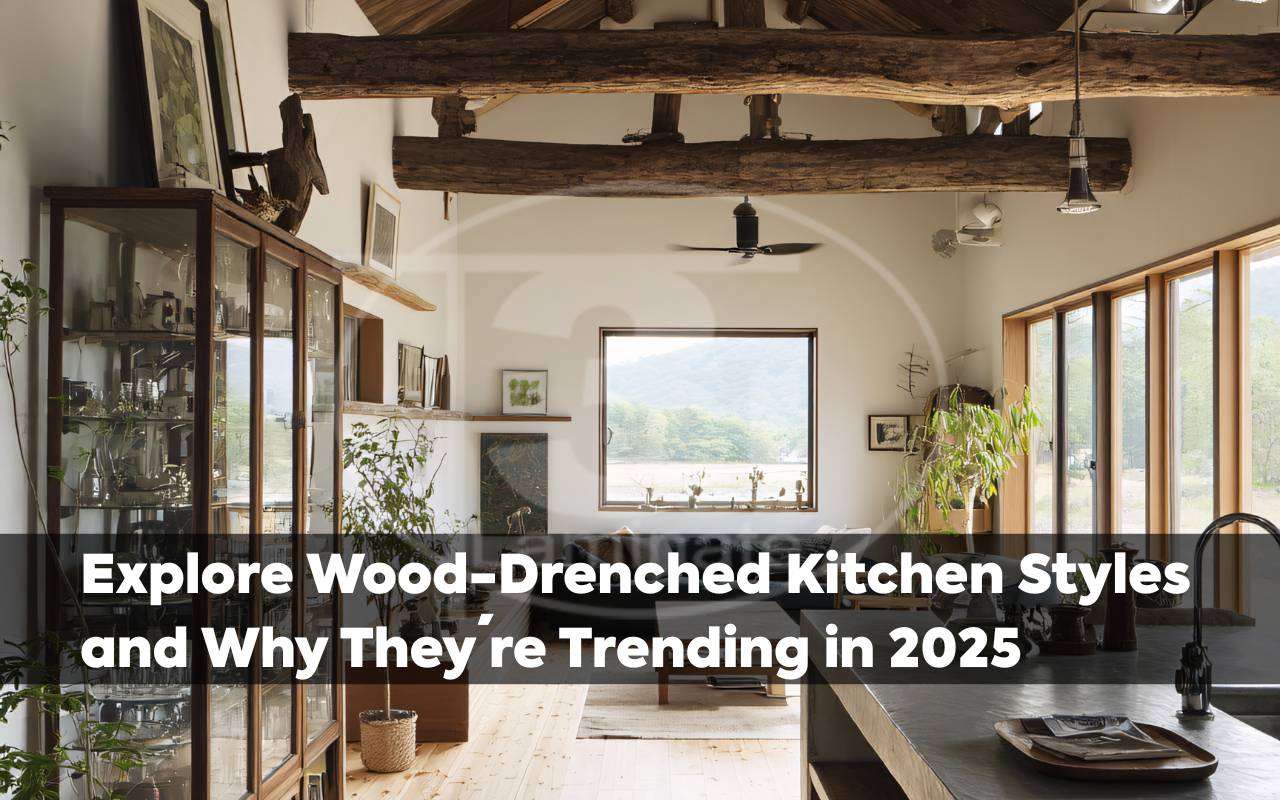
Walking into a kitchen that feels like a warm embrace is a sensation more homeowners are chasing in 2025. The secret to achieving this cozy yet sophisticated atmosphere lies in a design trend that’s making a remarkable comeback: wood-drenched kitchen. With inviting textures and natural tones, these kitchens are transforming culinary spaces into the heart of the home. They offer both aesthetic appeal and functional benefits that cater to modern lifestyles.
As sustainability becomes increasingly important, the allure of wood-drenched kitchen designs is magnified by their eco-friendly nature. Natural wood elements contribute to a serene ambiance while aligning with environmentally conscious living. From rustic charm to sleek contemporary styles, the versatility of wood enables homeowners to tailor aesthetics to any personal taste. Dive into the world of wood-drenched kitchen ideas and discover why they are shaping tomorrow’s spaces.
The Evolution of Wood-Drenched Kitchens
Throughout history, kitchens evolved from simple utilitarian spaces into sophisticated extensions of our living areas. Originally, wood dominated kitchens with beams, cabinetry, and rustic tables. By the mid-20th century, industrial materials like stainless steel replaced wood in modern homes. However, design trends have cycled back, reviving the warmth and character of natural elements.
- Heritage inspiration with reclaimed timber
- Integration of modern finishes and appliances
- Mindful living reflected through authentic materials
Today’s wood-drenched kitchen movement blends craftsmanship with innovation. In 2025, it reflects a deeper shift toward mindful living and authentic connections with surroundings. From farmhouse retreats to urban lofts, wood elements are proving adaptable and inspiring.
Embracing Sustainability: Eco-Friendly Design Elements
A wood-drenched kitchen isn’t just style—it’s a statement supporting renewable resources. Certified wood, salvaged beams, and eco-friendly finishes reduce environmental impact while enhancing beauty.
- Use FSC-certified or reclaimed wood
- Choose water-based sealants for better air quality
- Reduce carbon footprint through responsible sourcing
These choices support sustainable living while maintaining durability and timeless charm.
Rustic Charm: Incorporating Reclaimed Wood
Reclaimed wood introduces history, texture, and character into the kitchen. Often sourced from barns or deconstructed buildings, this material tells stories through unique imperfections. Integrated into cabinetry or open shelving, reclaimed wood brings artisanal warmth. It pairs beautifully with stone, brick, or concrete for a rustic-modern palette.
Modern Elegance: Sleek Contemporary Wood Finishes
Minimalist kitchens embrace light, uniform woods like maple for smooth matte surfaces. Darker tones like walnut add sophistication and depth. In 2025, subtle grain patterns become focal points in monochromatic settings. LED lighting enhances contrast while maintaining elegance.
Maximizing Natural Light: Enhancing Wood Accents
Natural light highlights wood grains and deepens tones. Skylights and reflective surfaces amplify brightness. Linen or bamboo treatments soften direct light, while open layouts allow natural flow. Prioritizing illumination makes a wood-drenched kitchen feel expansive and connected to the outdoors.
Functional Benefits of Wood-Drenched Kitchens
Wood is resilient, versatile, and eco-friendly. Proper sealing ensures durability against heat and moisture. Additionally, wood insulates sound and temperature, creating quieter and more comfortable spaces.
- Durable surfaces for heavy use
- Natural insulation for noise reduction
- Custom joinery for hidden storage
These functional benefits enhance both practicality and aesthetic value.
Personalization and Customization Opportunities
Wood offers near-limitless design potential. Homeowners can mix wood species or opt for cohesive tones. Custom cabinetry provides tailored storage solutions, while islands with waterfall edges create standout features. Personal touches like dovetail joinery or shelving reflect craftsmanship.
Maintenance Tips for Wood-Drenched Kitchens
Consistent care ensures longevity. Clean spills promptly, reseal periodically, and use neutral cleaners. Felt pads and cutting boards protect surfaces. Rotating décor helps avoid uneven fading. Over time, wood develops a patina that enriches its history.
FAQs About Wood-Drenched Kitchens
What defines a wood-drenched kitchen?
It is a space where wood dominates design elements such as cabinetry, flooring, and accents, creating warmth and style.
Are wood-drenched kitchens sustainable?
Yes, using reclaimed or certified wood makes them eco-friendly while promoting renewable design practices.
Do wood-drenched kitchens require high maintenance?
With routine care like sealing and cleaning, they remain durable and age gracefully.
Can wood-drenched kitchens fit modern homes?
Absolutely, sleek finishes and integrated appliances blend traditional material with contemporary design.
How can I add a wood-drenched look to my kitchen?
Incorporate wood accents, reclaimed materials, or custom cabinetry to achieve the desired aesthetic gradually.
The Timeless Appeal of Wood: Why It’s Here to Stay
Wood remains a symbol of warmth, craftsmanship, and timeless appeal. Its adaptability spans rustic cottages and modern penthouses alike. Choosing wood ensures long-lasting design that resonates on both practical and emotional levels. Advances in certifications ensure wood-drenched kitchen styles remain relevant far beyond 2025.
Embracing Wood-Drenched Kitchens in Your Home
Wood-drenched kitchen designs elevate cooking into a sensory experience. By selecting sustainable materials, you create a space that’s eco-friendly and visually stunning. Whether rustic or sleek, wood brings timeless warmth to your home. Embrace this trend and services to explore design options. If you’re ready to take the next step, connect with experts through contact us and bring your vision to life.
